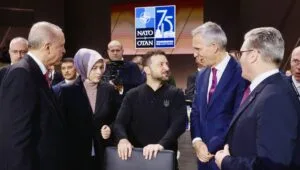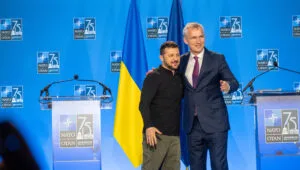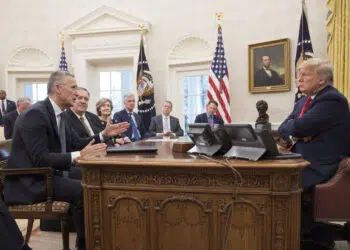Brussels – The three days in Washington come to a close with NATO’s renewed commitment to Ukraine politically and militarily. It is also the end of the 10-year term of Jens Stoltenberg at the head of the Atlantic Alliance before the handover in October to former Dutch Prime Minister Mark Rutte. The 75th summit of the North Atlantic Treaty Organization was supposed to be the defining moment in making the alliance “future-proof,” and, as far as could be done, it did not betray expectations. “Allies intend to provide a minimum baseline funding of €40 billion within the next year and to provide sustainable levels of security assistance for Ukraine to prevail,” according to the Washington Declaration, published yesterday (July 11) at the end of the summit, referring to the new long-term security assistance commitment for Kyiv, which will be re-assessed next year at the NATO summit in The Hague, Netherlands.

First of all, as hoped on the eve of the summit, Ukraine’s “irreversible path to full Euro-Atlantic integration, including NATO membership” is put in black and white: “We fully support Ukraine’s right to choose its own security arrangements and decide its own future, free from outside interference,” and, thanks to progress on its required “democratic, economic, and security reforms” since the 2023 Vilnius summit, “Ukraine’s future is in NATO.” However, it is the operational plan that the 32 allies in coordination with Ukraine’s president, Volodymyr Zelensky, most discussed, deciding to establish the Nato Security Assistance and Training for Ukraine “to coordinate the provision of military equipment and training,” but without directly involving the Atlantic Alliance in the war with Russia: “NSATU, which will operate in allied states, will support Ukraine’s self-defense in line with the UN Charter” and, “under international law, will not make NATO a party to the conflict.”

Of particular significance in this context is the establishment of the new military command in Wiesbaden (Germany), which, “by the end of 2024,” will be responsible for coordinating operations to send aid and train Ukrainian soldiers. In concrete terms, this will mean that the responsibility will shift from the United States (whose Defense Department now leads the Ukrainian Defense Contact Group) to the whole of NATO, ensuring a future even if there is a political storm in Washington. The most significant risk is Donald Trump’s return to the White House after the November elections, which could call into question the U.S. involvement in the organization and its funding and the protection of allies and relations with Vladimir Putin‘s Russia.
Regarding the 32 allies’ support for Ukraine, there are plans for communications from governments directly to NATO “twice per year, with the first report to include contributions delivered after January 1, 2024.” NATO will also appoint a “senior representative” to Kyiv. “This NATO summit sends a powerful message of unity and a strong signal to the world. Our resolve to support Ukraine is stronger than ever, including through the Ukraine Compact, an umbrella of bilateral security agreements,” said the President of the European Council, Charles Michel, representing the EU in Washington along with the High Representative for Foreign Affairs and Security Policy, Josep Borrell. Borrell also reassured allies on the headlong rush of the restless Hungarian premier and rotating President of the EU Council (until December 31), Viktor Orbán, who, with his “peace missions,” went in a single week to Russian autocrat Putin, the Chinese President, Xi Jinping, and former U.S. President Trump at his Mar-a-Lago residence in Florida, without any mandate from the Union and its member countries.
English version by the Translation Service of Withub









